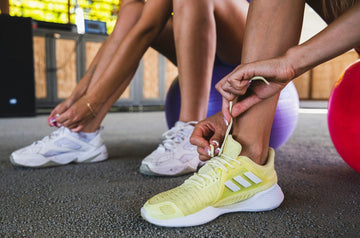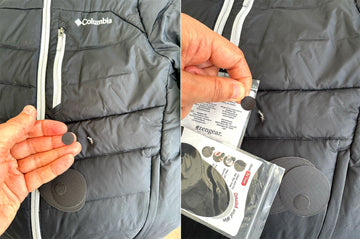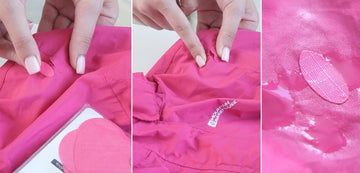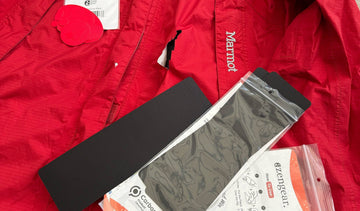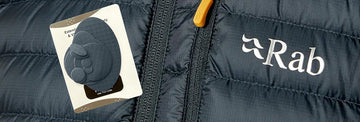How to Relieve Tight Calves and Enhance Your Performance
by Emily Jannet on Feb 16, 2024
Tight calves are a common ailment among runners, often stemming from overuse, improper footwear, or biomechanical imbalances. Not only can tight calves hinder your performance, but they can also lead to discomfort, pain, and even injury. However, with the right approach, you can effectively treat tight calves and improve your running experience. In this article, we'll explore various techniques and strategies to loosen tight calves and enhance your overall running performance.
Understanding Tight Calves
Before delving into treatment methods, it's essential to understand why calves tighten up in the first place. Running places significant stress on the calf muscles, particularly the gastrocnemius and soleus muscles, which work to push off the ground with each stride. Over time, this repetitive motion can cause these muscles to become tight and stiff. Additionally, factors such as inadequate stretching, improper footwear, or biomechanical issues can exacerbate calf tightness.
Treatment Strategies
Stretching: Incorporating regular stretching into your routine is crucial for loosening tight calves. Focus on stretches that target the gastrocnemius and soleus muscles. Examples include:
- Calf Stretch
Stand facing a wall with one foot in front of the other. Keep the back leg straight and the heel on the ground while bending the front knee. Lean forward until you feel a stretch in the calf of the back leg.
- Soleus Stretch
Similar to the calf stretch, but bend the back knee slightly to target the soleus muscle, which lies deeper in the calf.
Foam Rolling: Foam rolling is an effective technique for releasing tension in tight muscles. Roll the foam roller along the length of your calf muscles, focusing on areas of tightness or discomfort. Apply gentle pressure and avoid rolling too quickly to allow the muscles to relax.
Massage Therapy: Professional massage therapy can provide targeted relief for tight calves. A skilled massage therapist can apply various techniques to release tension in the muscles, promoting better flexibility and circulation.
Strength Training: Weakness in the calf muscles can contribute to tightness and instability. Incorporate strength training exercises such as calf raises, toe raises, and ankle dorsiflexion exercises to strengthen the calf muscles and improve their ability to handle the demands of running.
Footwear Assessment: Ill-fitting or worn-out footwear can exacerbate calf tightness by altering your gait and biomechanics. Visit a specialty running store for a professional gait analysis and shoe fitting to ensure you're wearing the right shoes for your foot type and running style.
Use of Compression Gear: Many runners find relief from tight calves by incorporating compression gear into their routine. Compression socks and calf compression sleeves are designed to provide graduated compression to the lower leg, helping to improve blood flow, reduce muscle vibration, and support the muscles during activity.
Both compression socks and calf compression sleeves come in a variety of sizes, styles, and compression levels, allowing runners to choose the option that best suits their needs and preferences. Some athletes may prefer higher levels of compression for maximum support, while others may opt for lighter compression for a more comfortable fit. It's essential to experiment with different styles and brands to find the right compression gear for your individual needs.
Rest and Recovery: Overtraining can lead to tightness and injury in the calf muscles. Allow for adequate rest and recovery between runs, and listen to your body's signals to avoid pushing through pain or discomfort.
Prevention Tips
In addition to treating tight calves, it's essential to incorporate preventive measures into your routine to avoid future issues:
- Warm up before running with dynamic stretches and exercises to prepare the muscles for activity.
- Gradually increase mileage and intensity to avoid overloading the calf muscles.
- Practice proper running form, including maintaining a neutral spine and avoiding overstriding.
- Include regular cross-training activities such as swimming or cycling to reduce repetitive stress on the calf muscles.
- Stay hydrated and nourished to support muscle function and recovery.
Tight calves can be a frustrating obstacle for runners, but with the right approach, they can be effectively treated and prevented. By incorporating stretching, foam rolling, strength training, and other targeted techniques into your routine, you can loosen tight calves and improve your running performance. Remember to listen to your body, prioritize rest and recovery, and seek professional guidance if you experience persistent tightness or discomfort. With dedication and consistency, you can unlock your stride and enjoy smoother, more comfortable running experiences.

